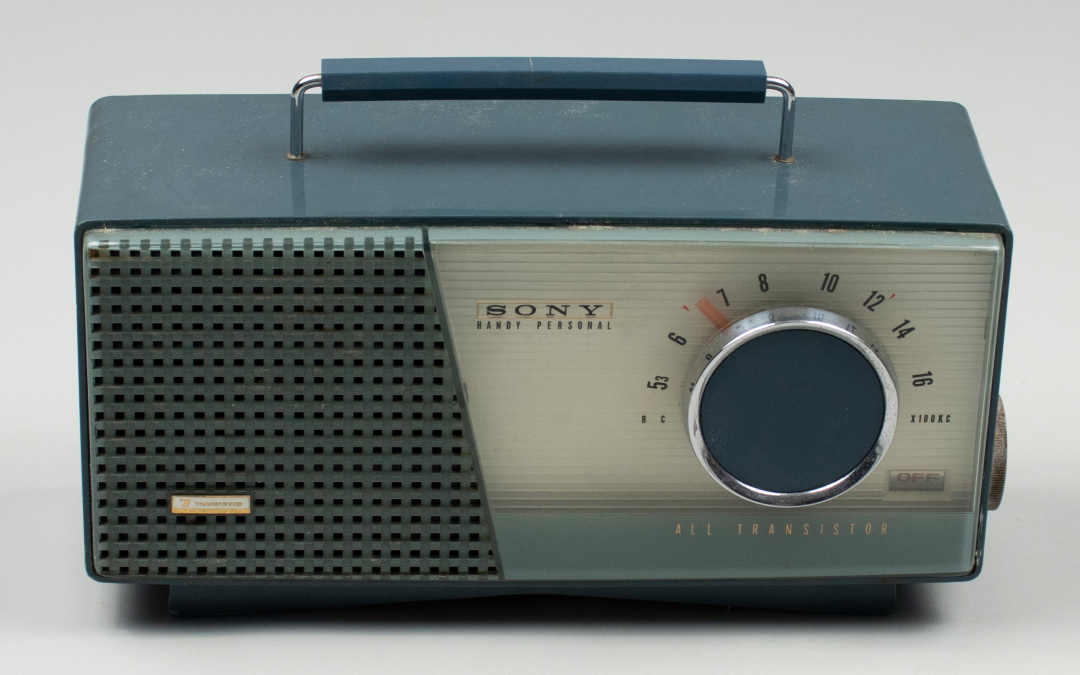(22/25)
In honour of the Diefenbunker’s 25th anniversary, we continue to highlight 25 artifacts from within our collections. This week, we are tuning it back to the 1950s and featuring a transistor radio.
The transistor radio is a small portable radio receiver that was introduced to the world following the invention of the transistor, a semiconductor device that switches electronic signals, in 1947. This introduction of small, but powerful hand-held devices revolutionized the field of consumer electronics and ultimately sparked a change in popular music, allowing people to now listen to music on the go. These devices were also gaining popularity as tensions began to rise as a result of the Cold War. Radio became crucial during this time of uncertainty as it was the most reliable form of communication for reporters to broadcast advice, instructions, and messaging communicated via the Canadian Emergency Broadcasting System (EBS) in the event of a nuclear war. There were three “Voices of Canada” including Norman Depoe, Charles Jennings, and Larry MacDonald who were responsible for these communications.

Transistor Radio, Diefenbunker Museum: 2000.004.001
The EBS in Canada was a part of the National Attack Warning System that was intended to be triggered in conjunction with the sounding of the Attack Warning Siren System. While the sirens would have alerted the population and provided aural notice that an attack had been detected or was imminent, the EBS would have been used to provide actual notification to the public of what was happening. These radio broadcasts would reach CBC frequencies across the country and would have been broadcasted from the Diefenbunker’s CBC Radio Room — the primary station to broadcast civil defence messaging, such as 11 Steps to Survival, to the public.
This Sony TR-712 Handy Personal Transistor Radio in the Diefenbunker’s collections was developed in 1959. This radio is rectangular, blue, and constructed of plastic. It has a blue and silver turning knob on the right half of the radio, and also has a blue and silver handle affixed to the top of the device. On the tuning dial, there are two small rectangles between the 6 & 7 and the 12 & 14. These denoted the frequencies that a civilian could tune to learn up–to–date information from the Emergency Broadcast Network. This radio contained the frequencies for the American CONELRAD (Control of Electromagnetic Radiation) method of Emergency Broadcasting that rapidly switched the transmitter stations to make the broadcasts unsuitable for Soviet bombers who may have attempted to home in on the signals.
Radio played a crucial role in keeping Canadians informed during a critical time in recent world history. Today, radio continues to be the most reliable and popular form of communication with millions of listeners tuning in on a daily basis.

Stay tuned as we continue to celebrate our 25th anniversary by uncovering stories from our museum’s collections.
